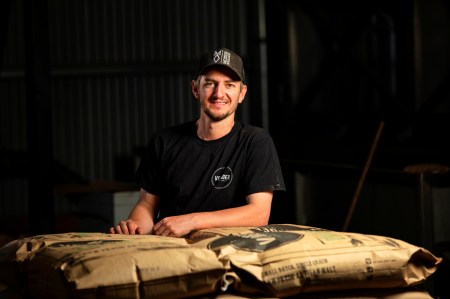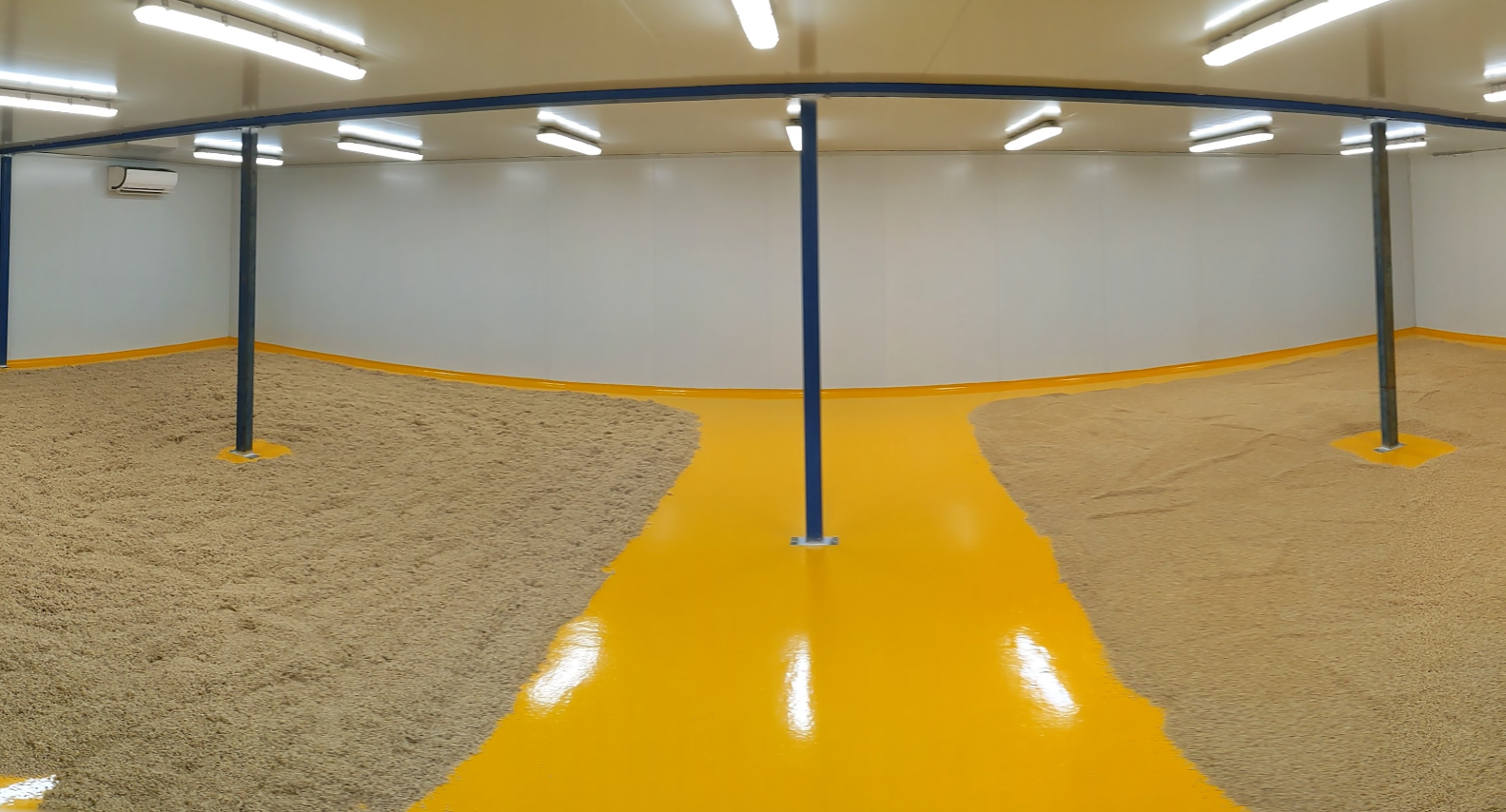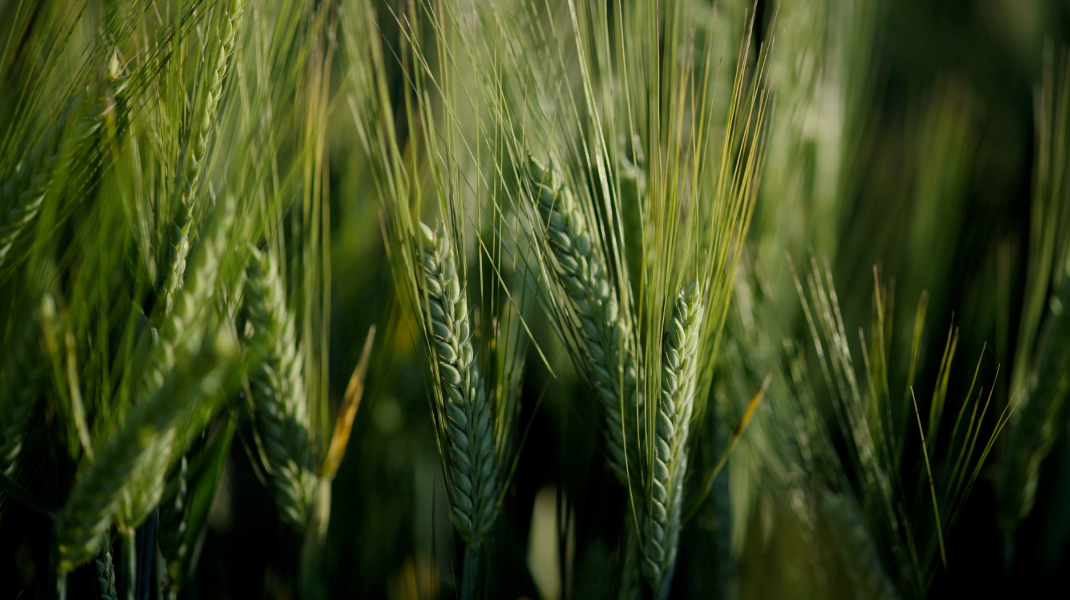
In the Spring edition of Beer & Brewer, Adam Carswell talks with Voyager Craft Malt, House of Malt, Van Dieman Brewing, Red Duck Beer and Bintani about why malt is no longer the rough diamond of brewing ingredients and how the demands of both brewers and consumers are driving maltsters to deliver a wider variety of products that come with greater provenance.
The craft community – from both sides of the bar or brewery – are an obsessive bunch. Once they turn their laser-like focus on to something, whether it’s beer styles, brewing techniques, or increasingly beer ingredients, they really like to wrap their brains around it.
Where was it sourced from? Who grew it? Which specific parcel of land was it grown on and how much rain fell there that year? Or what was the 10 year average temperature in the right-hand corner of the top paddock of the neighbouring farm?
While the humble hop has been a major part of the conversation for the past half-decade or more, you also might have noticed that its less looked at co-ingredient, malt and its provenance – while not yet on the tips of everyone’s tongues – is slowly emerging from the side stalls.
Dale Meddings, from wholesale malt (and hop and yeast) distributor Bintani, reckons it’s “probably something you see in just about everything people are consuming nowadays”.
“They want to know more and more about where their food and their beverages are coming from,” he said. “It’s that hyper-local kind of thing that I think has been accelerated by COVID. People want to know who they’re supporting, where their products are from, and that they’ve been, to a degree, treated well along the way. People are just hungry. They want more and more knowledge, more information.”
Fantastic Voyage

What we’ve been able to do is kind of ride on the growth of the craft brewing industry by growing unique varieties… and then malting them in a really unique way,” Stuart Whytcross, Voyager
Voyager Craft Malt, established in 2012 in the rural Riverina region of NSW, produces small batch, single origin artisanal malts from locally grown and regionally sourced seasonal grains.
Founder Stuart Whytcross said the growing attention his produce has garnered means he’s struggling to stay abreast.
“It’s been like that ever since we started. Every year we’ve had to continually double our capacity to keep up with the growth in demand. Ultimately that’s been because of the innovative nature of craft brewers. They’re looking for products that are unique, they’re looking for products that have flavour and that tell a great story.
“I think these days, with a lot of food products, we want more transparency around what it is we’re eating, how it’s been farmed, how it’s been grown, the sustainability around it, where it’s come from. It starts painting a picture in your head of quality, and a better product, I guess.
“What we’ve been able to do is kind of ride on the growth of the craft brewing industry by growing unique varieties, heirloom varieties, alternative grains, and then malting them in a really unique way.
“So, for instance, one of the malts that we do is smoked over a red gum local timber. And we do that with an older heritage variety of barley that’s been grown organically. They’re the kinds of things that are really, really exciting in terms of putting malt back on the map.”
Compliments of the House

Another maltster, albeit on a much smaller scale, is Drew Graham from House of Malt in Ballarat, who said he’s also happily “rushed off his feet” trying to keep up. The small batch craft malthouse, which uses the traditional technique of floor malting (pictured above), along with modern steeping and kilning technology, is bullish about the future and is soon looking at doubling capacity.
“Hops have been the king of the scene for quite a while, and rightly so, because they bring some fabulous flavours to beer. It’s probably what got a lot of people excited in the first place about the craft industry,” he said. “(But) a lot more brewers are looking to embrace more malt-driven beers across the board these days. I think there’s a heap of that going on. It’s great to see, because there are plenty of really cool flavours that you can get.
“I think brewers right now are also much more educated around all of the different styles that are available, and they are definitely interested in trying to get that information across to the consumer.”
Scott Wilson-Browne, founder and brewer of Ballarat’s Red Duck Beer, is Drew’s biggest customer, and not merely due to the fact that the two complementary businesses are only a few minutes walk apart.
“Drew started up a few years ago and I think we went down and tasted batch number one, and I thought ‘good!’,” Scott said. “I remember I had a little question about the pH or something, or how crunchy and crispy it was, and he said ‘it was on spec’. Then I said ‘can you make it a little bit more like this?’. And he just tweaked the recipe by 1 per cent and it was perfect.”
The popular regional brewer has been like, well, a duck in muck since his connection with House of Malt began.
“It’s always been malt first for me,” Scott said. “You can make a bad beer and throw a whole lot of hops in it, disguise it and pretend it’s something else. But if you only make good beer then you don’t need to.
“I’m happy to pay a little bit extra for something that’s as good as what Drew’s malting. In terms of quality, am I happy with it? Absolutely. I love his work. I think my beers, in the last year or so since I’ve used more and more of his malt, are getting even better. Drew knows all of his suppliers, and that information is right at my fingertips.
“I tried really hard for years, being a small producer, to research origin and provenance, as I was always interested in that. I could never get that information from the distributor or from the direct maltster. But Drew knows exactly. He talks to his people, he buys direct, so I can go out and meet the farmer that grows it if I wanted to.
“I have certainly noticed that other bigger maltsters have started to listen, and now have in their range malts that have their origin. But that’s a premium product that you pay extra for to know where it came from.
“With Drew, he knows already, because it’s all part of being an artisan. We’re small producers and we know where our stuff has originated.”
Malt matchmakers

Stuart at Voyager similarly points out the close, mutually beneficial relationships he’s helped to foster between everyone involved in the various steps of the malt lifecycle.
“It’s a pretty cool little circle. We’ve got our growers and brewers and we, I guess, kind of see ourselves a little bit as matchmakers. Ultimately, we’re connecting brewers with farmers.
“Using local growers means that we don’t have to bring the grain in from further out and it also means that we have a really close connection with that grower. In fact, a lot of our products that leave our malthouse have a QR code that the brewers can scan, and that’ll tell them the exact GPS coordinates of the paddock from where that grain comes from.
“The brewers have been able to establish a really close partnership with some of the growers themselves. They’re able to come out here at sowing time, or harvest time, and have meals and share beers with the people that are growing these grains for them.”
Stuart said one of the most gratifying aspects of his business is that local farmers are, quite deservedly, stepping into the spotlight.
“I think when it comes down to it, and this would resonate with a lot of brewers, everyone wants recognition in their job. Everyone wants that. And farmers, particularly in Australia, get very little whatsoever.
“Probably one of the best moments I’ve had with the company was at an event we did with Batch (Brewing Company) where we invited some of our growers along. Someone approached one of them and thanked him for the part that he’d played in making the beer he was drinking.
“The farmer said that it was the first time in 30 years that anyone had ever thanked him for doing what he does, which is growing food and fibre for the country. That was the first time ever that he’d been thanked for what he does on a day to day basis.
“The smile that you can see on every farmer’s face, when they’re thanked or given recognition, or they’re seeing someone drink a beer that their barley is going into – it’s pretty powerful.”
As Stuart and Drew have described, they can barely keep up with what’s being thrown at them by the seemingly insatiable brewing community, despite madly trying to add capacity as they go.
“I definitely think the idea of craft malt is still in its infancy here in Australia so there’s more room for more small scale maltsters in the market,” Drew said. “There’s room for hyper-local, where stuff being grown in a particular region is getting malted there and then getting brewed there and getting drunk there. I think that kind of thing is really appealing to people.
“My plan is to (continue to) increase my range of products across the board in terms of all the different specialty malts, roasted malt, crystal malt and smoked malts and things like that, that offer a really good range of flavours for brewers to work with.
“Having more interesting different products is going to help them (brewers) create (even more) different styles of beer, with different flavours that they may not have been exploring before.
“I think as the awareness of brewers increases, then they’re going to want to use more of those different things. Being along for the ride, and being able to provide products that the brewers are going to want to use to create new and innovative beers, is pretty cool and it’s definitely something I want to be making sure that I can be a part of for a long time.”
Stuart agreed, commenting that as the craft industry continues to grow, “we’ll start seeing a lot of other smaller craft maltsters in other areas pop up that can service their local brewers with their local malt offerings as well”.
“The craft brewers and distillers will be able to practice what they preach, in terms of supporting local and independent, and coming up with innovative flavours and all those kinds of things.”
‘The next big thing’

Bintani’s Dale Meddings is keen to chip in with what he calls his “incomplete view of the (modern) craft revolution here in Australia, in probably 20 odd years that I’ve been involved in the industry”.
“When it started, it was all about malt,” he said. “And a lot of the differentiation was through using different malts and specialty malts. The Joe White range was really big in that, and Weyermann and a couple of the other imported brands were really important too.
“As more and more interesting hops became available and people started doing more with them, they really did steal the limelight – probably for a good portion of the last 10 years, hops have been super important.
“My feeling at the moment is that while anything fermentation is really, really in the spotlight right now, malt is probably the next thing to climb back up onto the podium in terms of focus. I think it’s the next big thing on the agenda.”
Grow your own way

Will Tatchell has got it going on. The founder and brewer of fêted Van Dieman Brewing (pictured above on the right) has arrived at a point where he helms one of the only breweries anywhere that can literally do anything, at any time, completely in-house. Everything Will needs – equipment, ingredients, crops of hops and barley, not to mention what he describes as his “ghetto” malting setup – is within arm’s length.
“Some of our beers, the furthest our ingredients travel is 400 metres from where we brew it, which in any industry is pretty impressive,” he said. “We’d grown hops for 10 years, we’d sourced all the water from the farm, and we’d grown barley, but the final link in the chain was malting on site.
“The best thing that we have in our toolkit is an instantaneous feedback loop where we can malt something one day, brew with it the next, and within a couple of weeks have either something where we pour it down the drain, or have an immediate commercial product.”
For better or for worse, Will said growing barley himself gives “a level of uncertainty”.
“We are entirely beholden upon the particular season that we’re given. Seasonal variances can create some dramatic changes in the crop from a yield or quality perspective, or even just the success of the crop itself. From a grower’s perspective, we’re able to tell the story of where a particular season’s grain comes from and how that season looked.
“I’m a brewing romantic at heart. If you look at what Agrarian brewers were doing in France and Belgium, they were working on the same principles – seasonal variants, brewing with what’s available, and being dictated to by that.
“It’s all about being in touch with our ingredients, because we have the capabilities on the farm to do it.”
Top of the crops

If there’s anyone who has an ingrained knowledge of beer ingredients and where to get the best, it’s Dale Meddings.
While Dale and his brother Phil, and their now (mostly) retired father Pete who founded the Bintani company, have been distributing various malt products since 2005, they more recently doubled down with a new, location-specific product, Joe White Signature Malt.
“The thinking behind Joe White Signature Malt was that Australia, being such a large country with such a broad growing region for barley, has a small percentage of the barley growing area that’s irrigated. Barley growers are completely at the mercy of the elements. From right across WA to the East Coast, in Tasmania and up into southern Queensland, there’s wildly varying results.
“Joe White do all the work in identifying and collecting the barley. Each year they go through the process of figuring out where the best barley is coming from and source a unique crop from that region. This year’s crop is from Tungamah (northern Victoria). It’s the same farm from last year.
“This floored everybody because when they rose to the top of the pile last year, it was surprising. They had a year out of the box, and they’ve repeated it this year, which was phenomenal. For this particular farmer, he clearly knows what he’s doing. He’s had such a good history with this particular parcel of land and how to manage it.”
